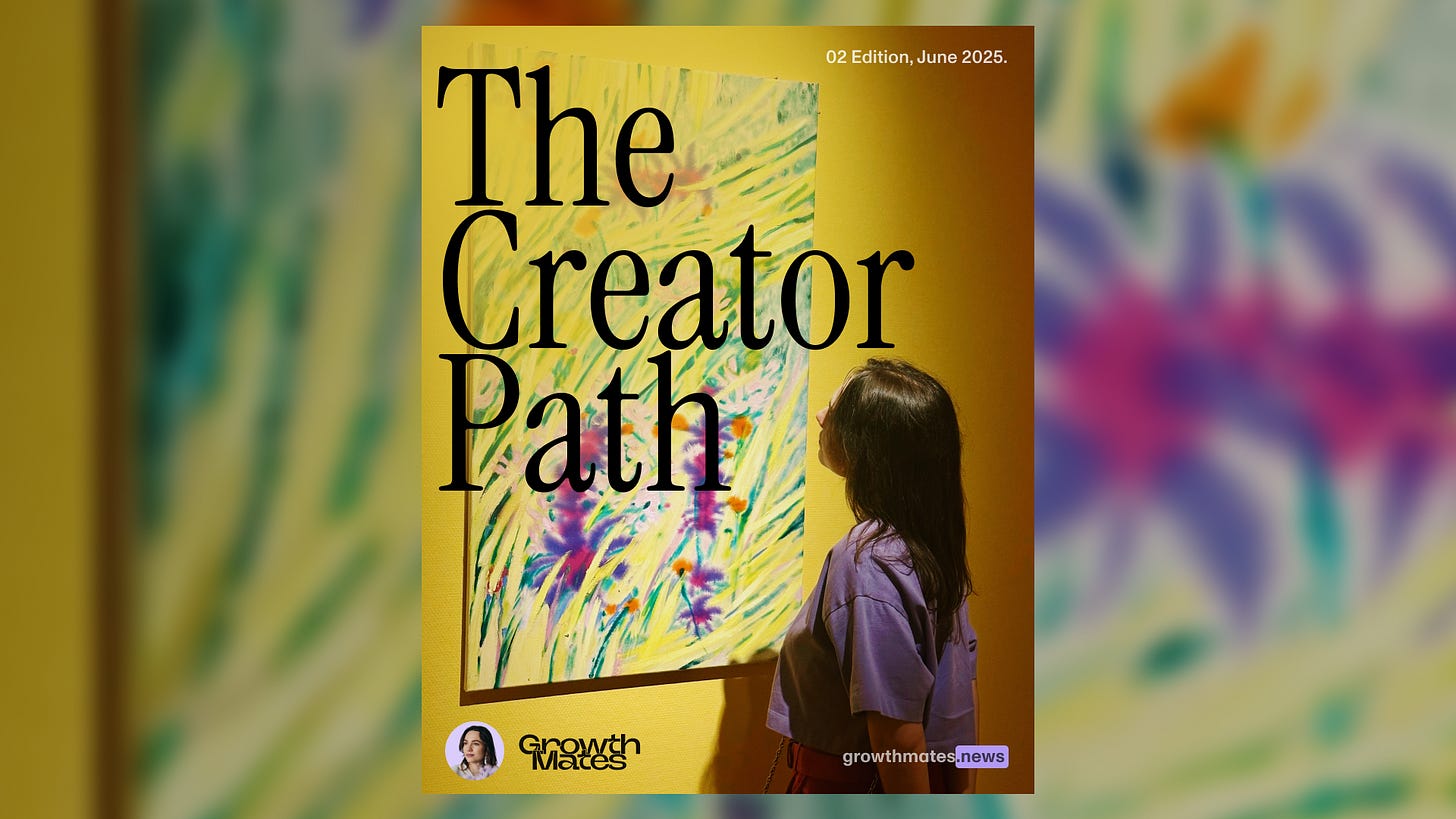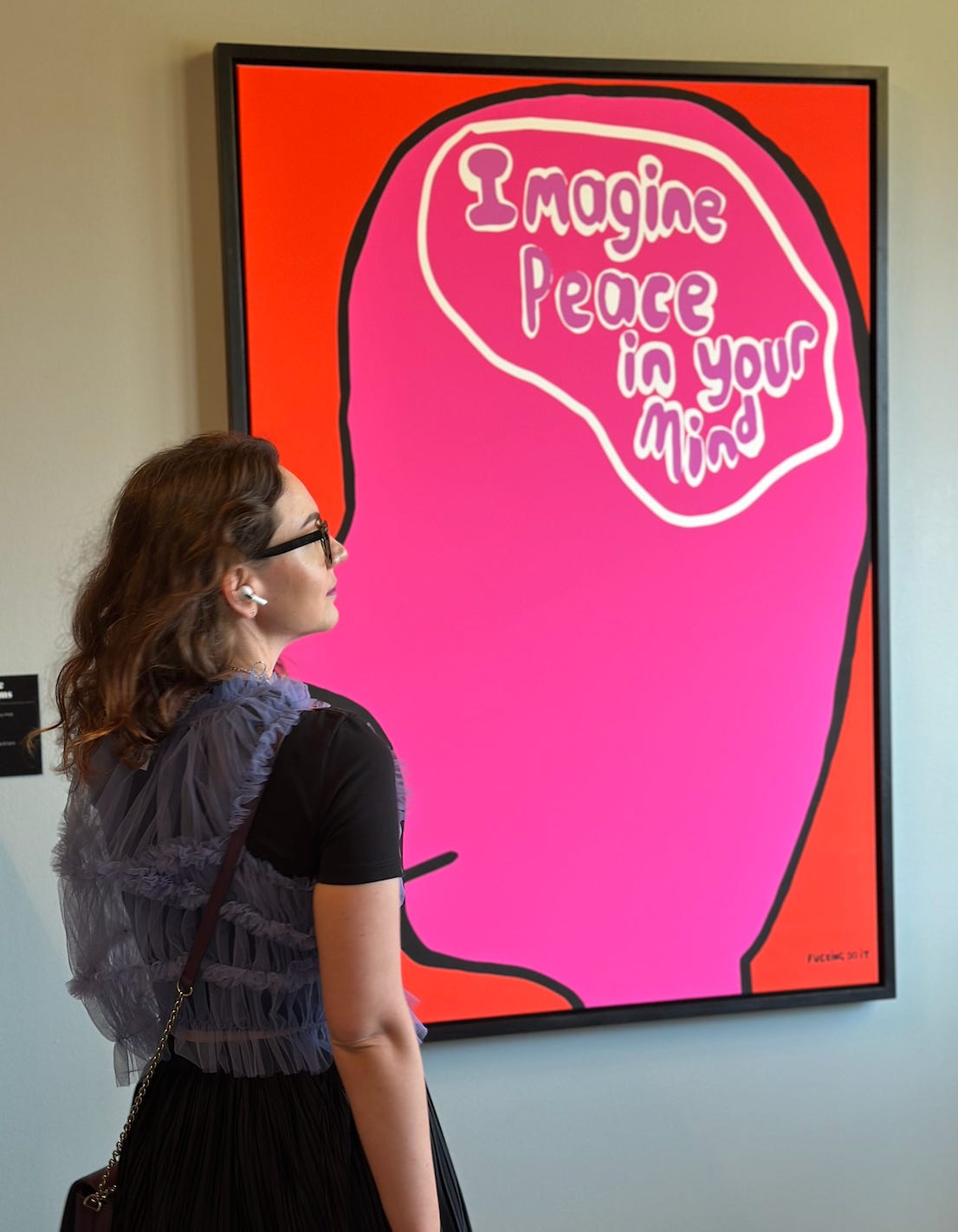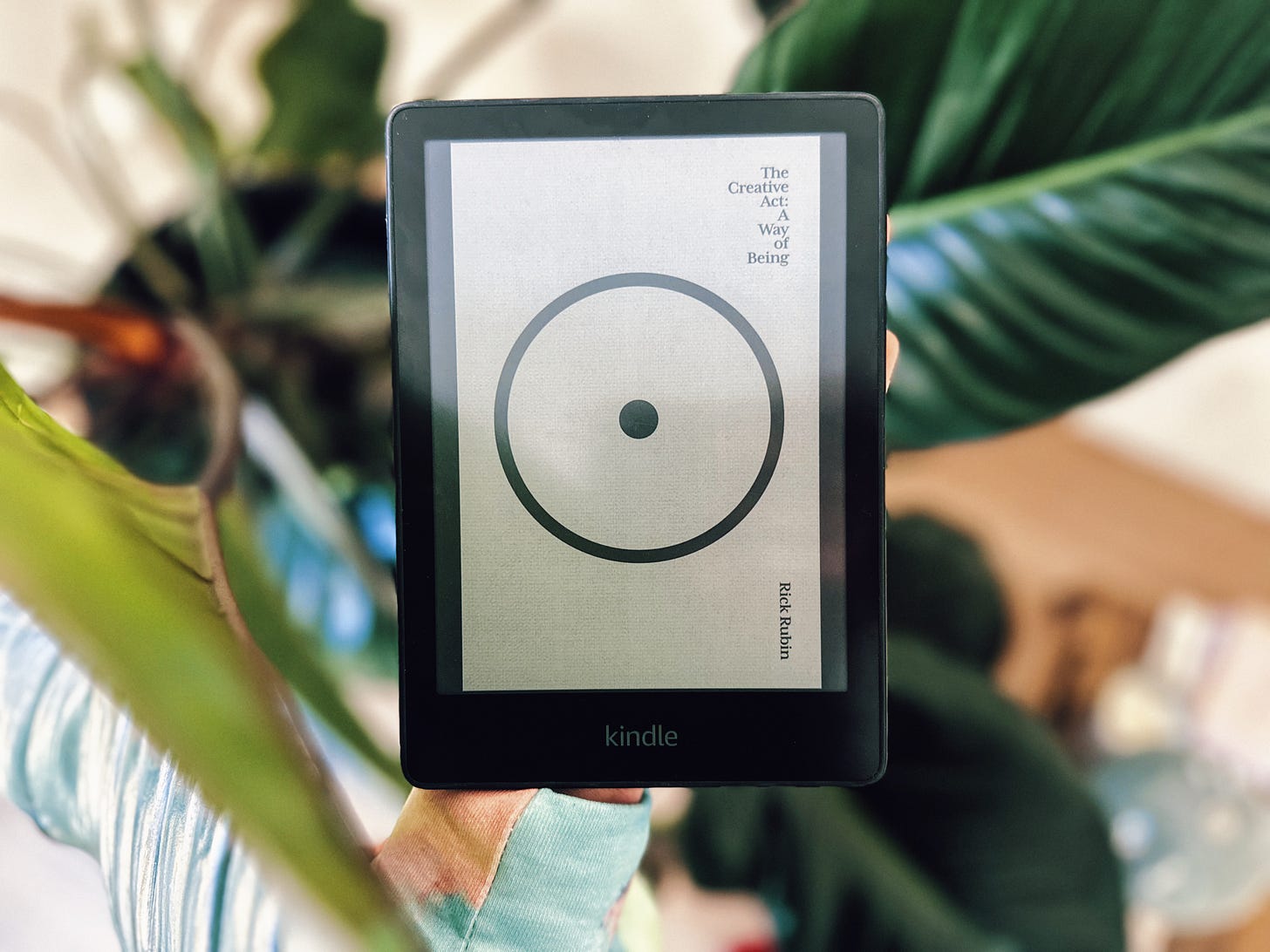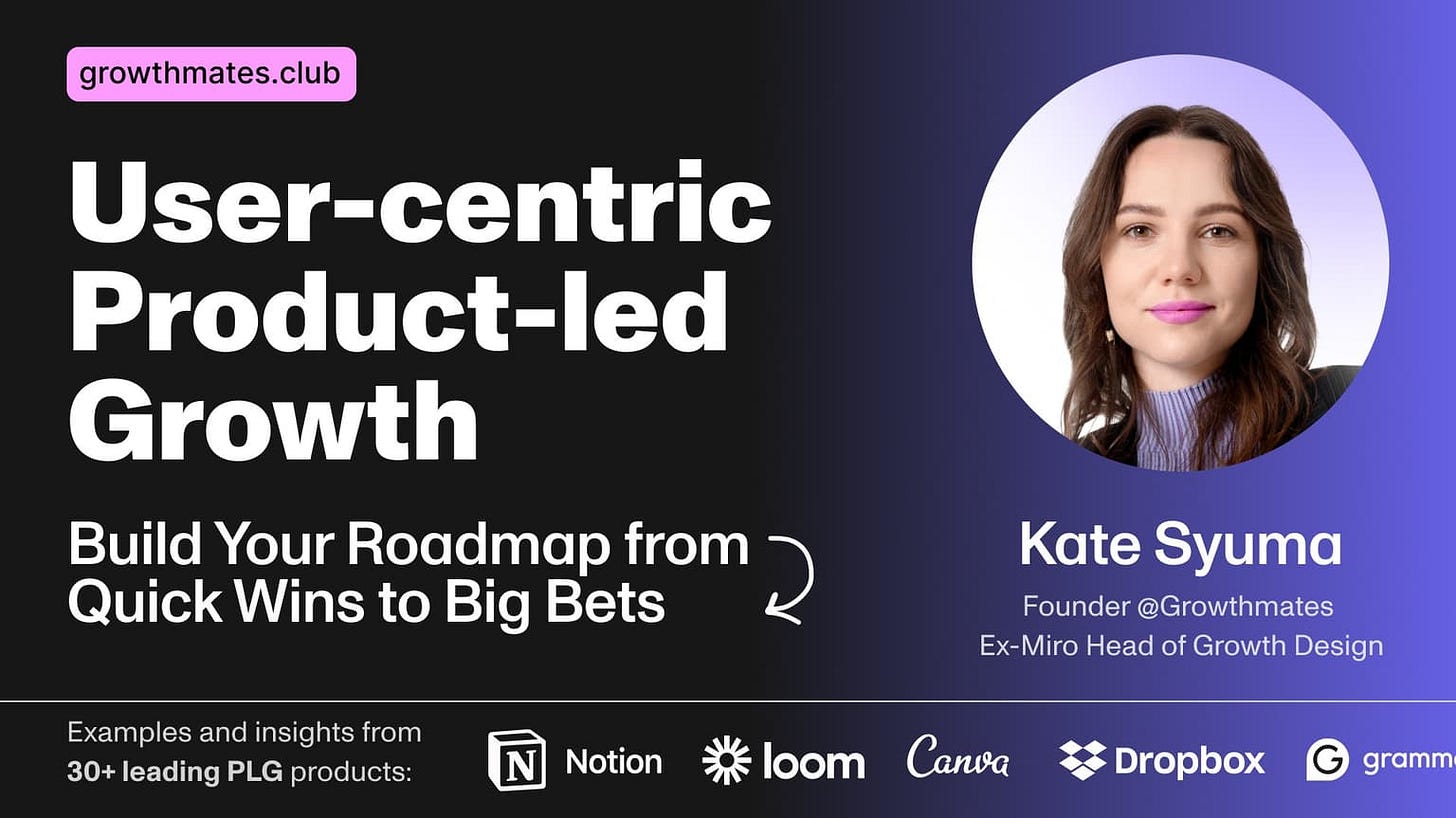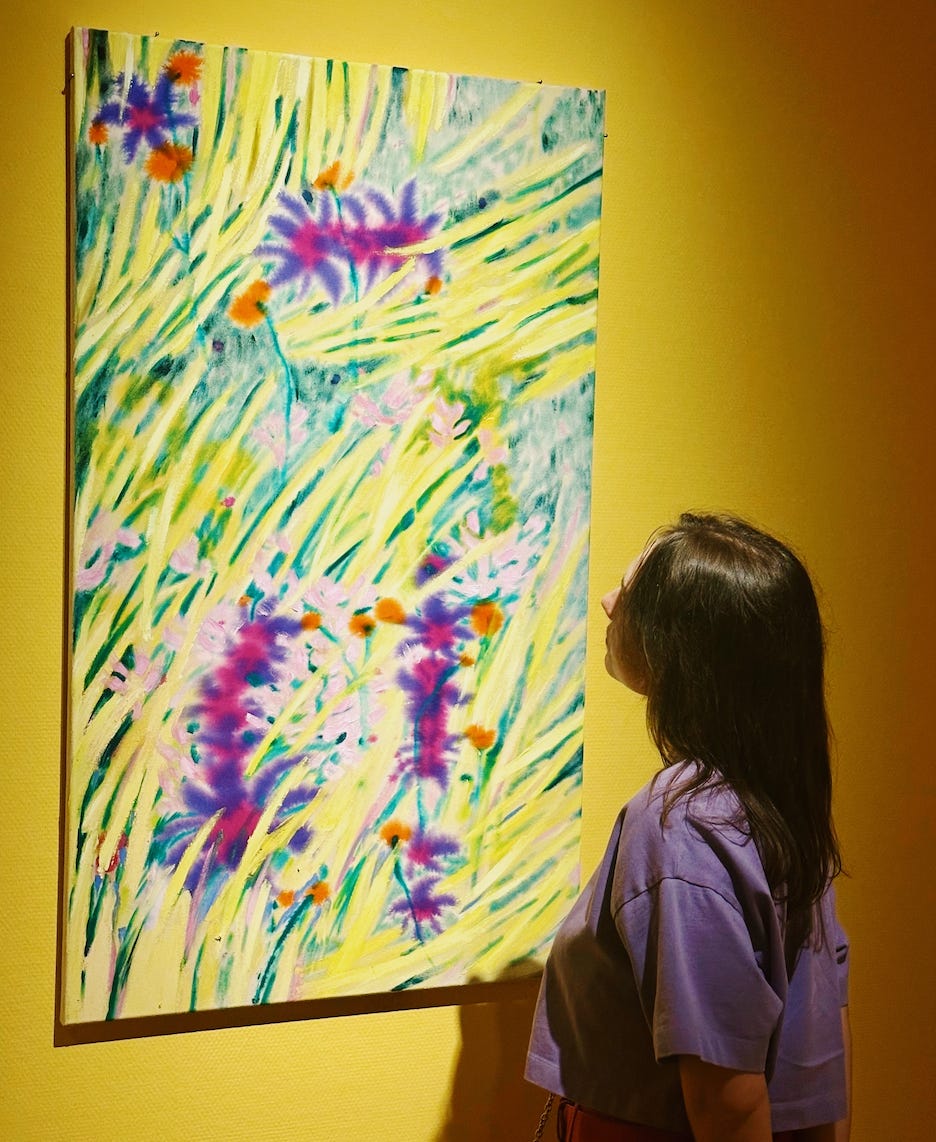👁️ What it means to be a Creator in an AI era?
Creative endeavors, building a mobile app, “Creative Act” highlights, and more.
Hello everyone 👋 I’m Kate Syuma, and welcome to Growthmates.news — the newsletter where we explore growth stories to inspire your professional and personal growth. Join the community of 6,500+ Product, Design, and Growth people from companies like Amplitude, Intercom, Miro, Atlassian, Grammarly, Framer, and more.
Want to collaborate on future content or share your product story? Check it out 👉
I’m writing this post right now — does that make me a creator?
But what if I asked ChatGPT to help shape it with a prompt — am I still the creator then? And if yes, to what extent?
Lately, I’ve been wondering: how do creators — of apps, products, content — really feel about not fully owning the creative process anymore? What does it mean for us when we’re no longer the only mind behind the work? Let’s try to figure it out.
This is the second edition of the “The Creator Path” rubric in Growthmates newsletter — the place where I collect inspiring stories beyond the tech world, reflect on my personal journey as a creator, with the purpose to inspire your personal growth.
In the previous May edition, we discussed the challenges of discovering deep aspirations and translating them into a career trajectory. Today, I’d like to shed light on some questions that have been bothering me lately.
Here’s what we’ll unpack today:
Who is a Creator in the AI era?
5 lessons from “Creative Act” by Rick Rubin
The Creator Spotlight ⭐️
Special announcement 💫 — a mobile app that we’re building to help people dive into the subconscious and emotional self-discovery.
The sources of inspiration from last month 💜
I’m excited (and nervous) about each edition, as it opens up the things I’m not actively sharing elsewhere. Each time, this is an opportunity to self-reflect, get out of my comfort zone, and hopefully help others reconnect with their creative parts.
Let’s dive in 👇
1. Who is a Creator in the AI era?
A shocking insight hit me while writing one of the posts: I no longer own the whole creative act. Each time I collaborated with AI, I felt a range of emotions and biases:
Am I still a creator if AI significantly contributes to idea generation and editing of my content? 🧐
Where is this “flow state” when I could lose time and enjoy the trial and error of the whole creative process?
How can I build relationships with AI when it helps and inspires, but doesn’t take the joy from the creative process?
Each time I wanted to spend countless hours on writing, I felt self-judgmental. It’s not the type of luxury I can afford anymore — the speed of content creation is reaching phenomenal results that humans can’t compete with. But one element about human nature remains constant.
Creativity is a fundamental aspect of being human.
— Rick Rubin.
I agree with Rick Rubin (the author of “Creative Act”) — EVERYONE is a creator. But how can we remain creative when even the most joyful parts of the work can soon be replaced?
One guiding principle makes me feel more optimistic about that:
Keep creating. Own the creative act. Treat AI like a helpful tool.
It’s in our control how we use AI as a supportive contributor to the creative process if we use it consciously:
✅ Generating ideas when feeling stuck
✅ Polishing the work before sharing
✅ Doing creative research to find more interesting references
But sometimes, putting AI on silent mode and doing things the “old-school” way helps to reunite with the flow state. For example:
✍️ Just writing non-stop for 15 minutes (even using pen & paper);
💡 Generating your own ideas first (e.g. on Miro board) before asking AI to do their job. As a positive side effect — it can save a bootle of water for the planet;
🧶 Craft hand-made artwork of your choice (paintings, clay objects, gardening, etc.) — this is a moment to recharge from technologies and get back to them more consciously.
As A. Gaudi said — “Originality consists in returning to the origin” What really helped me in the last year is getting back to these “origins” and searching for inspiration there. A book Creative Act by Rick Rubin became one of my guiding paths to these forgotten sources.
2. Lessons from “Creative Act” by Rick Rubin.
In one of my previous articles, I already shared how to Unblock Your Creativity: 10 Lessons from Rick Rubin. Now, as I have finally finished the book, I’d like to share some highlights that just hit me. This time, I will let you interpret and complete them with your personal experience 👇
5 wisdom quotes from Rick Rubin that inspired me the most:
💬 Art is choosing to do something skillfully, caring about the details, bringing all of yourself to make the finest work you can.
“…It is beyond ego, vanity, self-glorification, and need for approval.”
💬 The creator stops being the creator once they finish the work.
“…They then become the viewer.”
💬 Discipline and freedom seem like opposites. In reality, they are partners.
“…Discipline is not a lack of freedom, it is a harmonious relationship with time.”
💬 The best art divides the audience.
“…If everyone likes it, you probably haven’t gone far enough.”
💬 The only practice that matters is the one you consistently do…
“…not the practice of any other artist.”
And this is just a tiny portion of wisdom from the book “Creative Act: A Way of Being” by Rick Rubin. But it feels like a timely reminder for those who’re searching or want to reunite with their creative part in the technological evolution.
3. The Creator Spotlight ⭐️ Es Devlin — Artist and Stage Designer.
But can technology and art co-exist? YES. There are plenty of inspiring examples in the industry, but recently I got most fascinated by Es Delvin and her masterclass on “Turning Ideas Into Art”.
For over two decades, she’s been shaping the stages and stories of Beyoncé, Billie Eilish, U2. Most recently, she worked on The Weeknd’s “After Hours til Dawn” world stadium tour (2023) — a surreal, dystopian dreamscape of light, architecture, and emotion, scaled to tens of thousands yet intimate in feeling.
But behind all that scale is stillness — a fierce commitment to the core idea. Her mantra? Work in the area of “just about possible.” 🌍

She treats ideas like living things. She listens freely. Draws from language. Observes patterns. Finds the essence. And then asks herself and her clients: Why are we doing this? Who is it for? Should we bother? That manifesto alone could save years of creative wandering — and this a must-have for starting any new project.
She believes that if the audience trusts you, they’ll follow. Her process is both intuitive and architectural. In her masterclass, she said:
Try different words (titles) on you as you try clothes, and you’ll be surprised. People will just follow suit as soon as you start calling yourself the thing you want to be.
— Es Delvin.
That line changed me. It reminded me that most of the friction in creativity is self-permission. For the last few years, I have defined myself as a Growth Advisor, Educator, and Founder of Growthmates, and I keep changing my positioning. It’s okay—the audience will follow.
She also doesn’t believe in perfect balance. Some days work wins. Other days family. What matters is that you calibrate, not punish yourself. And her parting note is simple, but unforgettable:
Please grow, just grow. As long as you grow every day, you’re doing the right thing.
— Es Delvin.
I would just add: “Grow in the direction of your interests and core values”. That is my inner compass, and why I keep creating this newsletter rubric.
4. What I create + Special announcement 💫
This is the most vulnerable section in this edition for me. While starting and completing the work is no longer challenging, the sharing part remains the toughest.
While I was reflecting on how to navigate in the AI world together with my husband (who is also an iOS Apps creator 😉), one thing we both aligned on:
AI should serve us as a tool to solve needs and problems. As creators and makers, we can leverage AI to create products that will serve people in a good way.
Some of you know that I’m into Jungian Analytical Psychology — a practice I’ve been deeply involved in for almost 5 years. Looking back, I see how this practice helped me make major changes in my life, pass through the loss of my father, and find inner strength to leave a full-time job and start my own business. A big part of this analytical psychology is dream analysis, as this is the main source of our subconscious.
For 4+ years, I was taking “dream notes” using the system's note app, but it was chaotic, unorganised, and it didn’t help me properly prepare for therapy sessions.
We created the DreamNotes App to help people make sense of their dreams. It’s trained on Jungian Analytical Psychology principles and helps uncover deep insights, archetypes, and get ready for the next therapy session. It’s NOT a therapy replacement — it’s a supportive tool for that.
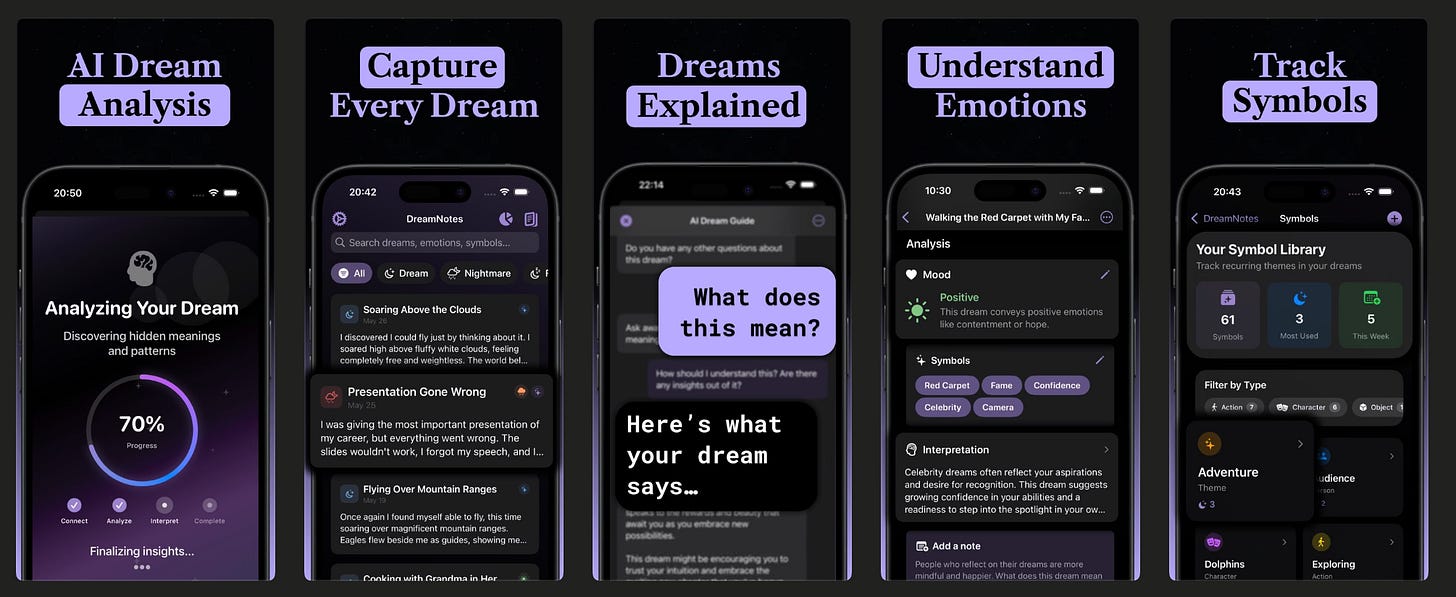
This is a report on How People Are Really Using Gen AI in 2025 from Harvard Business Review. If last year the ideation was the winner, now “Personal and Professional Support” (and therapy) has become a leader.
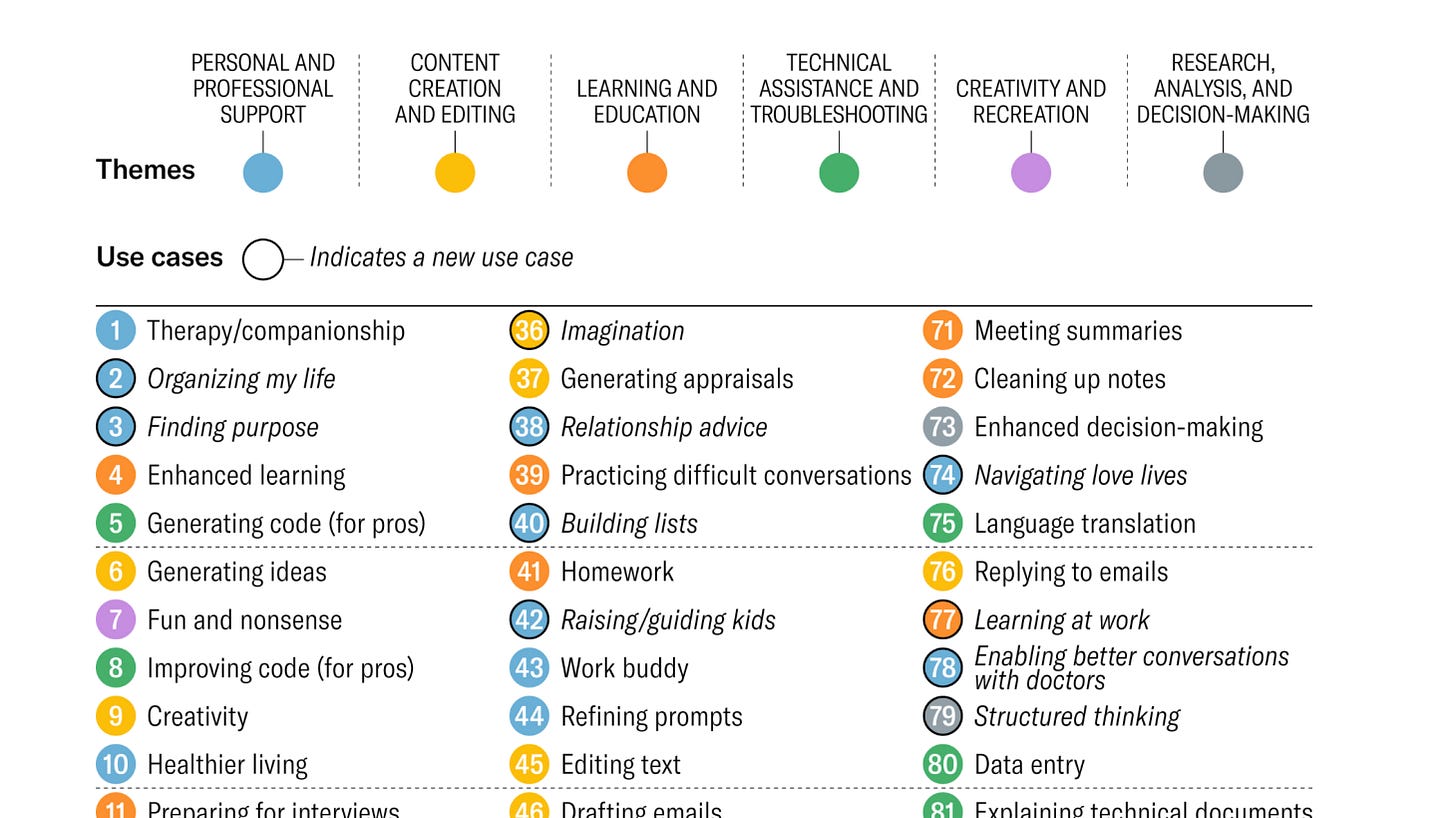
As a long-term personal therapy user, I don’t think it will be replaced. But I believe it can be significantly enhanced. Check out DreamNotes → and share your feedback, feature requests — it means a lot for us to make that early-stage app more relevant and useful with each step and iteration 🙏
And if you’re curious about what else I create or would like to learn from me, I will remind you of all the other things I keep working on and how I can be useful for you:
User-centric Growth Course (100$ off 🎁) → You can bring your growth challenge and build a growth roadmap from “Quick Wins” to “Big Bets” by combining behavioural science and proven growth strategies. The next cohort starts already on 16th June, and there are only 3 spots left 👇
Newsletter collaboration: Let’s tell the world about your product and co-create meaningful content for a vibrant product & design community. Book a slot →
Onboarding & Activation Design Sprint: I will work closely with your team for 2 weeks to help you fix your Onboarding and improve the first user experience that can drive x2 uplift on your Activation. Reserve your sprint →
Coaching and Mentorship: DM me on LinkedIn if you’d like to chat about your career challenges, motivations, and transitions you’re exploring.
My main purpose with this rubric is to continue sharing unconditional inspiration, and I have something more for dessert here 🍰.
5. The sources of inspiration 💜
1. Creative journaling.
I realised that I couldn’t have only one journal for all my needs. So now, in addition to all digital journals (like DreamNotes), I started 2 new physical journals:
Green Moleskine for deep self-reflective insights that I’d like to re-read in 10 years;
This beautiful Dior notebook (a gift from a friend) became my go-to for creative reflections.
In May, I was also a participant in a 6-week creative community group — these questions became the starting point to start reflecting:
What’s holding me back from creating?
Where are the ideas coming from?
Who supported my creativity in the past? And how was it discouraged?
The answer to each question became 3-5 pages of text — try it for your own self-reflection.
2. “Heroine’s Journey“ by Maureen Murdock.
After I finished Creative Act: A Way of Being, I was looking for a new book to inspire me. I found it in Heroine’s Journey, a great adaptation of Campbell's famous “Hero’s Journey.” It unpacks self-development as a journey for any human being.
This story shows the journey not from a masculine, but a feminine point of view. How did society create the norm that women had only “male” role models for building a successful path? This attempt to redefine it resonates a lot with my personal path, when I first deeply united with a masculine figure in my life (my father), and now I am looking for new ways that could give me a more balanced integration of feminine and masculine aspects (both needed for individuation).
3. Dora Tuynman exhibition in the Cobra museum (NL).
Dora Tuynman at the Cobra Museum — one of the exhibitions that deeply touched me this month.
She was a Dutch artist whose bold and vulnerable works were almost forgotten for decades. Only now, her art is being rediscovered and finally shown to the world again. There’s something incredibly powerful in that — the way her raw, unapologetic expression breaks through time and silence.
It reminded me: even if your voice feels unheard now, it doesn’t mean it won’t matter later. Sometimes, your creative act just needs time to find the right moment to land.
So, who is a CREATOR? 💫
After reflecting on all of this, I truly believe: EVERYONE can be a creator.
You don’t need to be a painter or a writer. Building products, launching a startup, designing an app, writing content — it’s all part of the creative act.
In this AI-powered world, our role is shifting — but it doesn’t mean it’s disappearing. We’re invited to co-create, to stay conscious, and to treat AI as a companion, not a competitor.
The key is to keep showing up. To stay connected to your inner voice, your values, and your why. That’s why I show up every week in this newsletter (thank you if you read to this line). 💫
Because creativity isn’t optional, it’s how we make sense of the world. It’s how we grow.
This is all for today, dear readers. If you found this helpful — please share your reaction and leave some comments 💜 It would give a huge support for me to continue creating this!
If you find this newsletter valuable, share it with a friend, and consider subscribing if you haven’t already. There are some discounts available, and maybe you can expense this :)
Connect with me on LinkedIn and learn more about my work on Growthmates.club.
With best regards,
Kate Syuma



